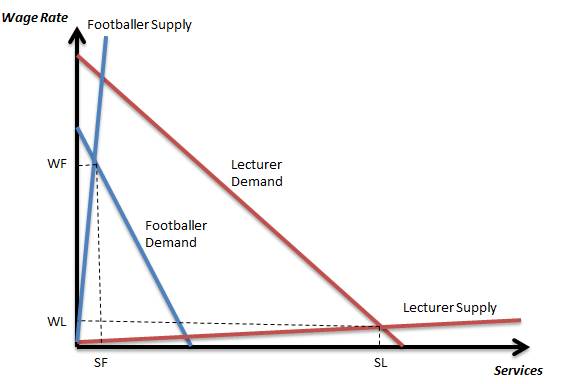
As the transfer window frenzy reached its crescendo on Monday night, I thought it wise to consider the story that has probably dominated the headlines more than any other since the early summer – the Gareth Bale Saga. Tottenham Chairman Daniel Levy held firm until late on Sunday evening, and while few doubted Bale would not be a Real Madrid player come Tuesday morning of this week, the deal went down to the wire.
If the media are to be believed, the Welsh winger is set to become one of the best paid players in the world and will be on the same salary scale as the likes of Ronaldo and Kaka. A figure of around €200,000 per week after tax has been mentioned as the likely cost to Real of Bale’s services and begs the question is he worth it?
The reason Gareth Bale can command suggest an expensive price is because he is what economists call an inelastic good. An inelastic good is one with, pardon the pun, few substitutes. In fact, one could argue the Welshman is perfectly inelastic (no substitutes). The irony about this deal is that society is actually willing to pay more for me to do my job than Bale is to do his. Sadly for me, he is likely to earn more next year than I will earn in my entire lifetime! Here’s why.
Assuming, the Estadio Santiago Bernabéu were to be full for every home league game this season, just over 1.6 million fans will see Bale in the white of Real. That’s a value of just €6.15 per fan and doesn’t include cup games, Champions League games or the millions of TV viewers around the world! My teaching over the next twelve months will involve lecturing to around 400 students. That puts my worth at around €75 per student, twelve times as much as Gareth Bale!
However, the problem for me isn’t one of demand but rather supply. The illustration below for Rodney Fort's text Sports Economics will help explain the point.
This is all the more depressing when I consider he gets this for doing something I am happy to do for free during the wet Irish winter!

 RSS Feed
RSS Feed